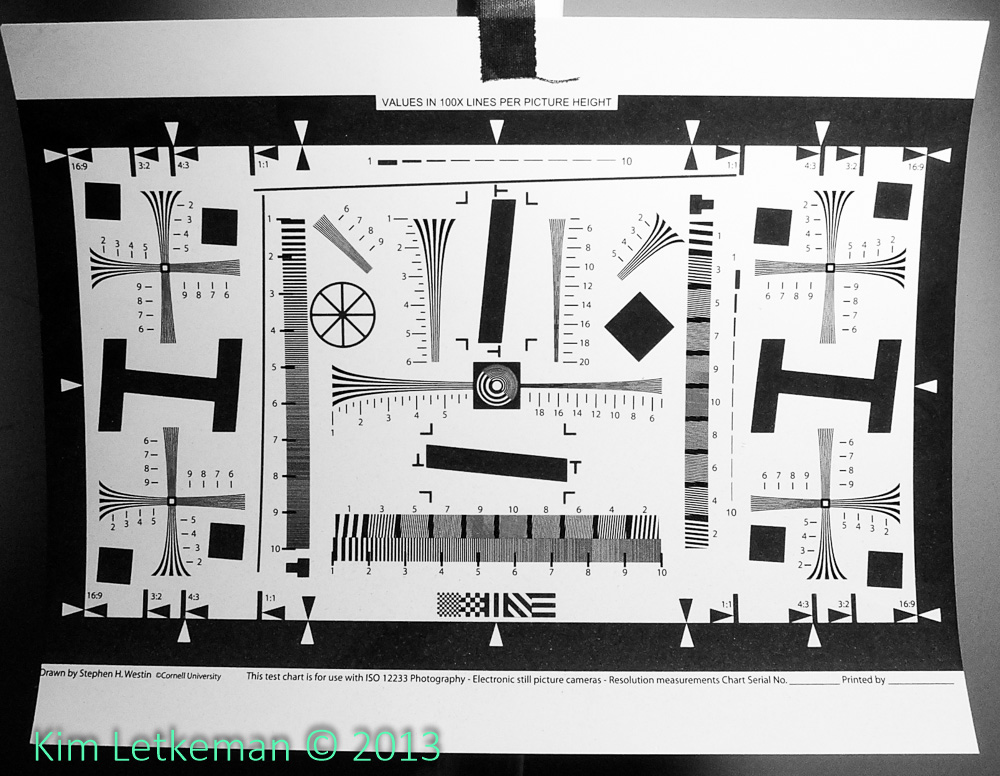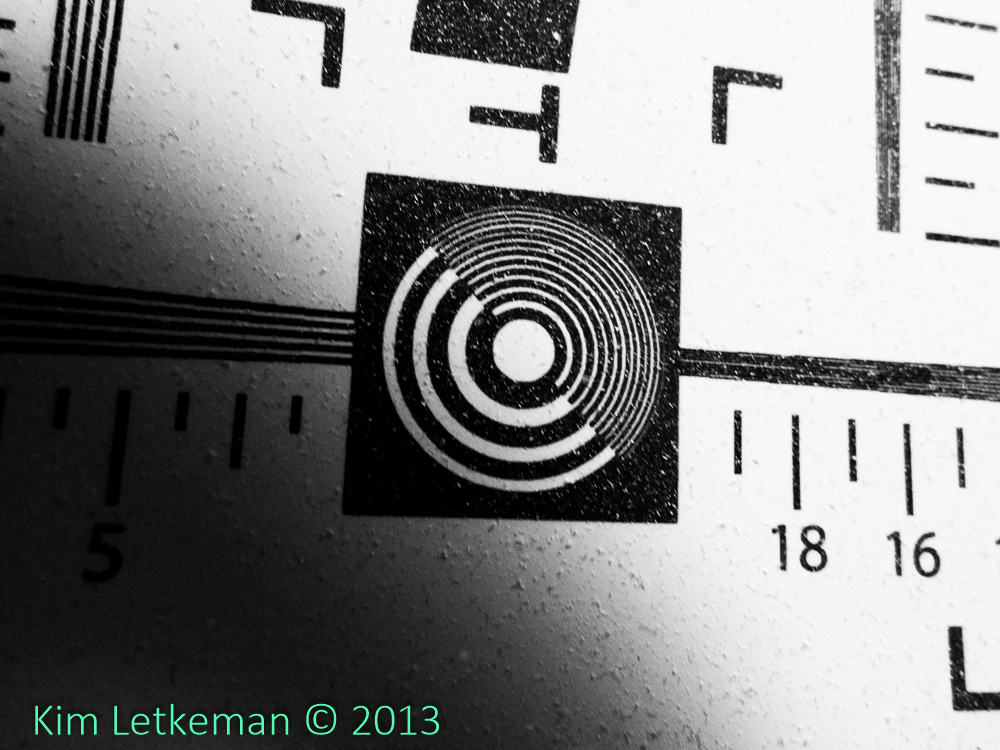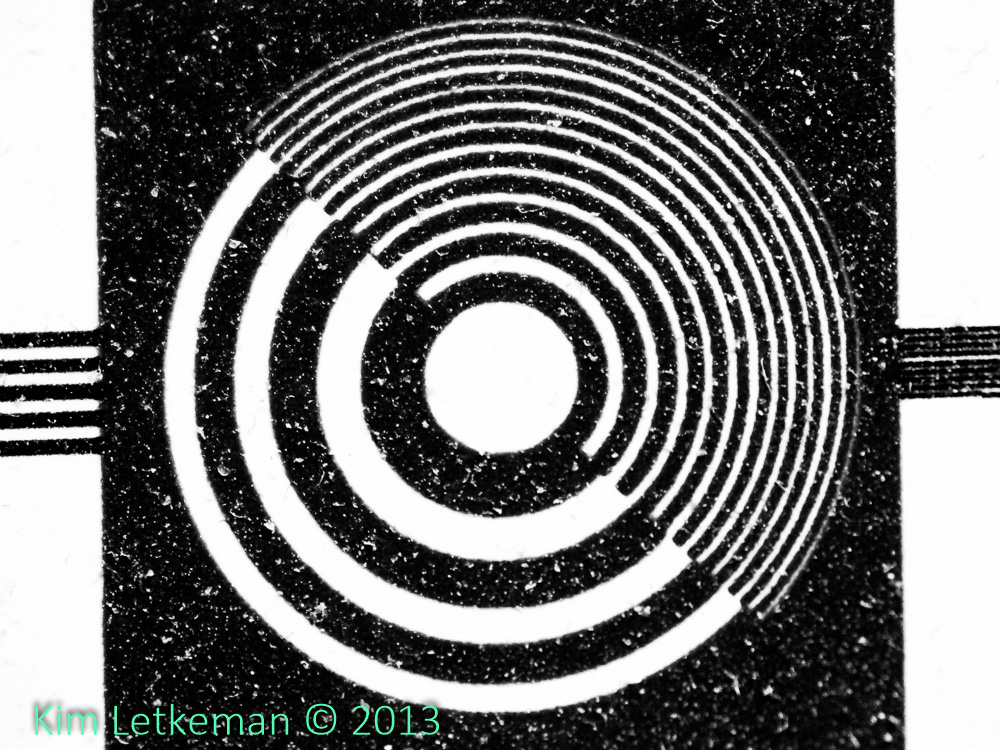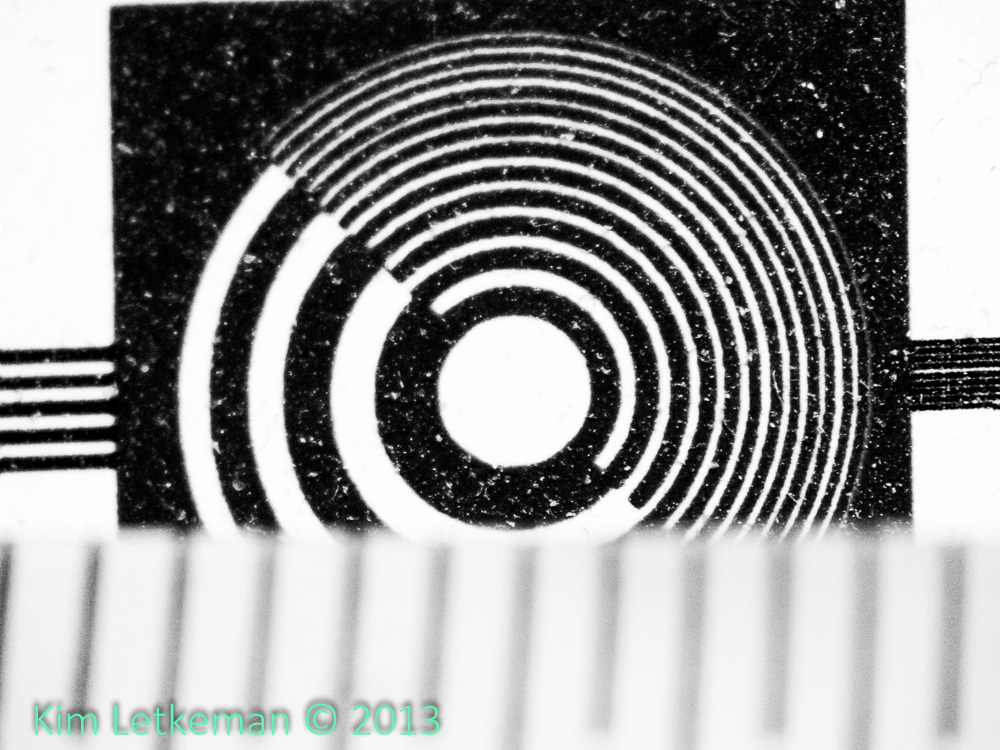This article concentrates on the HS50EXR and its macro capabilities, spawned by a little winging on a popular forum over changes to macro focusing distances from the HS30EXR to the HS50EXR (687mm –> 1000mm … ya think? :-)
The old lens apparently had a sweet spot at around 200mm EFL (effective focal length, as expressed in terms of the old 135 standard, a.k.a. 35mm film,) where it focused to something like 12 inches. [Update: I was informed that the old lens sweet spot was 150mm EFL at 3 inches, which actually sucks since it would not let much light in and no insect would sit still for that proximity. The new sweet spot for the 50 is 200mm at 12 inches, which also sucks.]
I find that the closest that the HS50EXR focuses at 1000mm is 89 inches, which is decidedly long. But not outlandish when you consider the magnification, which is actually decent. It’s not like there are many dSLR lenses that can match it even at these distances.
So let’s start with a target. This is an 8.5x11 sheet of glossy photo paper on which I printed a standard resolution chart ISO 12233. I then hung it (last year, hence the coating of dust) on a pole where I can turn a clamp-on to face it for fairly bright lighting, albeit with an ugly temperature in the orange spectrum. I render all images in Lightroom as Black and White to avoid wasting time on trivialities like color balance.
The following image is shot hand held at full wide angle and is a slight crop showing the whole chart. I shot in JPEG using my standard settings at 400 ISO. I am shooting auto ISO 400 right now and this is still lit by only one bulb.

Hs50exr @4.4mm 400iso f/5.6 1/30
If you click through to look at the 1000px rendering, you will be impressed, I would bet, by the impressive resolution down to 1000+ lines per picture height. In other words, the finest gradations are showing detail even though I did not set up on the chart at the appropriate markers.
Suffice it to say that we do not have a resolution or acuity problem close up. This lens is good here.
Now, moving in at full wide with “super macro” mode on shows how close it can get and the rather nice magnification and detail you can expect. But it also shows super macro’s inherent weakness.

HS50EXR @4.4mm 800iso (I lied about auto iso 400 :-) f/5.6 1/60
Remember to click through as this is still a 1000px image of the full frame, This image shows that you get pretty good magnification, as that center square is maybe half an inch wide or so. But this image also reminds us that focusing with the lens touching the subject is going to fail to allow enough light into the scene. Which is why I have always found the concept of a “super macro” mode a bit laughable. Without light, there can be no useful imagery. And show me the live insect that will allow itself to be subjected to a lens within 1mm or less … not likely.
So … I have always favored backing out to full zoom in macro mode to maximize the bokeh. Without a nice background, a macro image is not going to impress, no matter how much detail is rendered. So the question, then, is how close can you focus and how much detail can you render? And yes, I am fully aware that this is actually two questions :-)
I set up the tripod and started dragging it back and forth until I found the point of closest focus at 89 inches, Seven feet five inches is rather a lot, but not really any worse than the average birding lens. And the magnification is not half bad.

HS50EXR @185mm 400iso f/5.6 1/105
That subsection of the chart is just about exactly 4” wide, perfect for flowers. A large Peony bloom will fill the frame, and the background at 1000mm EFL should be pretty creamy.
Next, I dug up my 67mm Canon 500D achromat (2 lens close up filter, highly corrected and extremely sharp), which is permanently mounted on my Sigma 105mm 2.8 Macro (F mount, which I use in MF mode using an adapter on my Panasonic m4/3 cameras as a 2:1 magnification 210mm macro lens.) Turns out t screws right on to the HS50EXR … can’t beat that :-)
Now, a 500mm achromatic close up lens is designed to focus lenses at 500mm (about 24 inches) from the sensor plane. Which means that we should get a pretty short distance from the lens. And low, and behold, we do. I eventually found the exact spot (and the latitude is remarkably narrow here) at 16 inches from the front lens element. No surprise, but wow.
Now allow me to blow your mind

hs50exr @185mm (1000mm efl at 16 inches from target to front lens element) 640iso f/5.6 1/60
Now that’s what I’m talkin’ about … a full frame shot covering a very small target.
To confirm the magnification, I held a standard measuring tape against the target, pushing the target a mm away from the lens and putting it out of focus. The DOF is understandably narrow at this magnification.
The ticks on the tape are, of course, at 1/16 inches. So we can count 11.5 gaps, which leads us to a total measurement of 23/32 of an inch.
23/32 * 25.4mm/inch == 18.26mm coverage on the horizontal. Since the sensor is 1/2”, it has dimensions of 6.4mmx4.8mm. The magnification is therefore 18.26/6.4, or 1:2.85, which is very nice. Some pretty good flower close ups and insect shots should be possible with decent working distance and nice acuity.
All in all, a satisfying capability I think.
